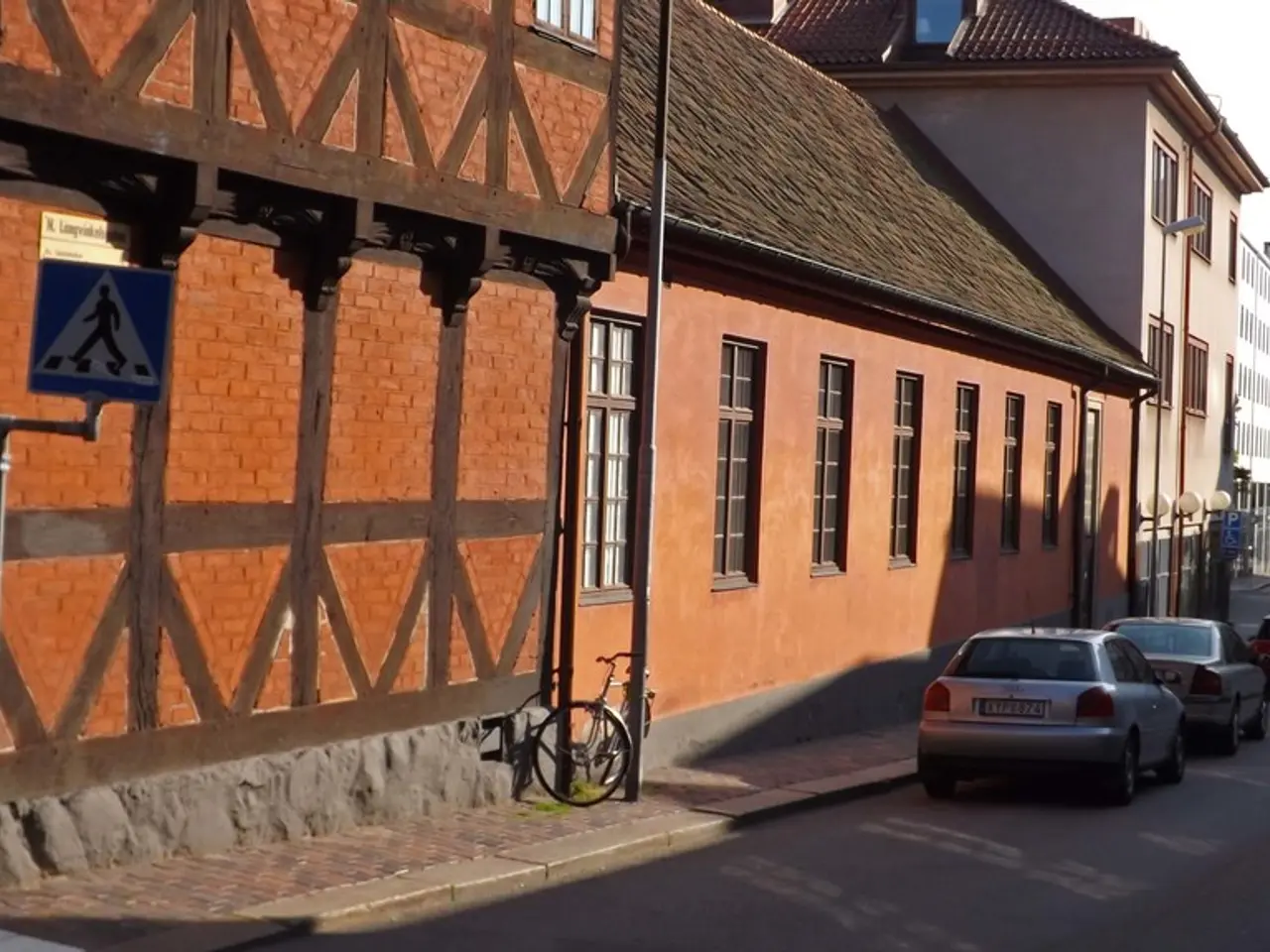Transforming Intersections for Cyclists: Efficient Strategies to Ensure Bicycle Accessibility
In a bid to reduce the number of fatalities among cyclists, urban planners are focusing on designing safer intersections. This task, however, is a delicate balancing act, as it involves addressing both subjective and objective concerns, such as visibility and mandatory requirements.
Over 70% of lethal or serious cycle accidents occur at intersections, underscoring the urgency for change. To address this issue, a set of guiding principles has been recommended for designing bike-friendly intersections. These principles emphasize safety, visibility, and speed control, aiming to reduce conflicts between motorists, pedestrians, and bicyclists.
Key principles include small corner radii at intersections to reduce vehicular turning speeds and shorten crossing distances for bicyclists and pedestrians. Channelized right-turn lanes designed with right-angle entries also play a significant role, as they encourage slower turning vehicles and improve sightlines for cyclists and pedestrians.
Other essential features include the use of raised crosswalks within channelized right-turn lanes, high-visibility crosswalk markings, expanded painted medians or physical buffers, and designs that cater to human scale and safety by incorporating features like wide sidewalks, street trees, pedestrian lighting, and traffic calming measures.
Common cycling intersection designs that prioritize safety and visibility include protected intersections, channelized right-turn lanes with right-angle entries, raised crosswalks and crossing islands, high-visibility markings, and narrowed vehicle lanes adjacent to bike lanes.
Ensuring that intersections do not become a barrier to cycling is crucial for any city wanting to increase its cycling population. The feeling of being unsafe and vulnerable at intersections deters people, particularly families and the elderly, from cycling. Traffic planners should be aware of both subjective and objective safety, as people will not cycle if they feel insecure, even if an intersection is objectively safe.
Local context is a significant influencer on the choice of intersection design. Intersections should accommodate the whole universe of riders, with designs that may be exclusive or more vulnerable for some users. Urban planners should consider the diversity of cyclists, including those riding to work, weekend warriors, families, and those using adaptive bikes.
Local culture can also affect the intersection design chosen, with roundabouts being more popular in cities where they are commonly used. At low levels of speed and volume, right of way solutions, mixed traffic, or traffic islands may be more appropriate. Visibility of cyclists at intersections is crucial, with a self-explanatory design being essential to avoid confusion and hesitation.
Intersection designs which separate motor vehicles and cyclists are most commonly chosen at high speeds and volumes. The choice of intersection design depends on the nature of the junction, speed and volume of traffic, and other factors such as culture. Local traffic regulations will impact which cycling intersections are possible, with regulatory reluctance potentially curtailing the implementation of new cycling intersection developments in certain areas.
Reducing vehicle speed at intersections is important to reduce conflicts and the severity of conflicts. Intersections influence how people feel about cycling. The more phases in a signalized intersection, the longer waiting times, which could increase the risk of people running red lights or getting tired of cycling due to long wait times.
In conclusion, by prioritizing safety, visibility, and speed control, urban planners can design intersections that cater to the needs of cyclists, making cities safer and more inviting for those choosing to cycle.
- To improve the overall urban lifestyle, it's essential to design bike-friendly intersections that incorporate fashion-and-beauty elements such as wide sidewalks, street trees, and pedestrian lighting.
- For food-and-drink enthusiasts who enjoy exploring new places, travel opportunities could be expanded with safer and more inviting cycling infrastructure at intersections, encouraging healthier modes of transport.
- To ensure a seamless blend of technology and sports, smart intersection designs that prioritize safe cycling could integrate features like traffic calming measures and sensors that monitor vehicle speeds, enhancing the cycling experience for enthusiasts and promoting a tech-savvy lifestyle.





